Practical ways landowners can increase milkweeds.
Enlarge
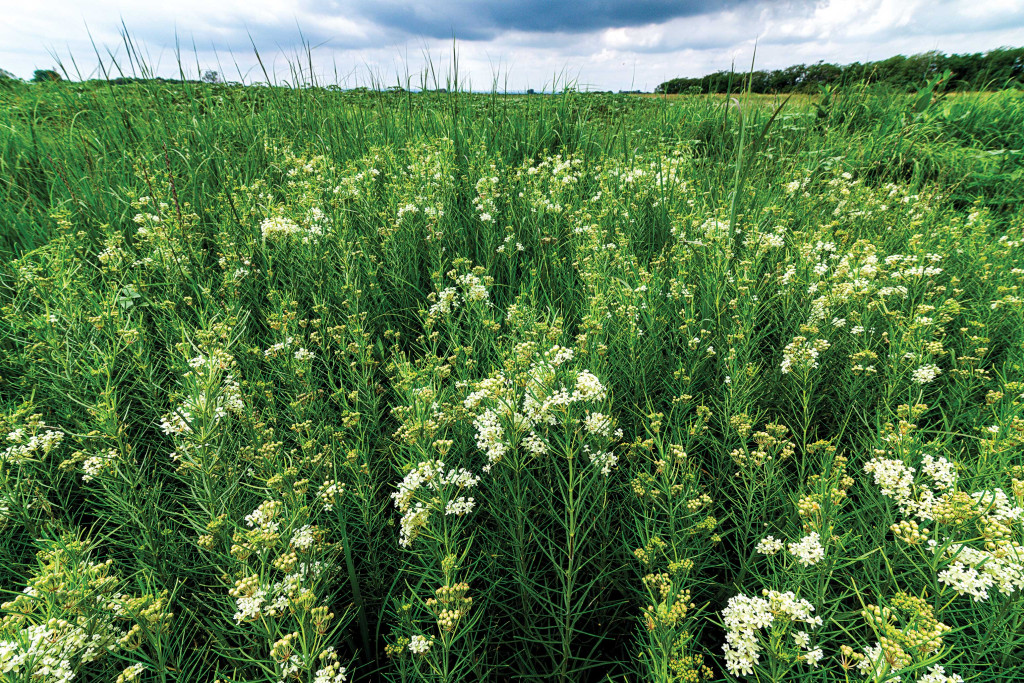
Photo by Gerry Steinauer
Story and photos by Gerry Steinauer, Botanist
The monarch butterfly is in trouble. Based on annual surveys conducted at their wintering grounds in central Mexico, the eastern North American monarch population has declined 80 percent over the past 25 years. The rapid decline has spurred the U.S. Fish and Wildlife Service to consider listing the butterfly as an endangered species.
Complicating the situation, evolution has painted the monarch into a corner. They lay their eggs solely on milkweeds and their caterpillars eat only milkweeds, making them dependent on the plants for survival. In response to the monarch’s decline and research in Iowa that showed declines in milkweed numbers, the Midwest Association of Fish and Wildlife Agencies in 2018 set a goal for conservation groups to increase milkweed numbers by 1.2 billion plants across the monarch’s Midwestern breeding range, which includes eastern Nebraska. Our state’s portion of the total was an intimidating 125 million.
Many conservationists, including myself, questioned the number’s validity as it was based on limited research and seemed rather contrived. Nevertheless, the proclamation set off a rush to plant greenhouse-grown milkweed seedlings in yards, parks and roadsides to help the monarch. The rush, however, was somewhat tempered when scientists began to caution that the planting of milkweeds alone will not save the monarch.
“‘Plant milkweeds’ was a two-word solution to a complex ecological problem,” said Mercy Manzanares, program coordinator for the Monarch Joint Venture in Omaha, a conservation organization dedicated to conserving the butterfly. She explained that in addition to the loss of milkweeds, other factors contributing to the monarch’s decline include loss of their prairie habitat to agriculture, development and tree encroachment; the widespread use of pesticides and herbicides on cropland and lawns; and climate change, which interrupts the butterfly’s fall and spring migrations to and from their wintering grounds.
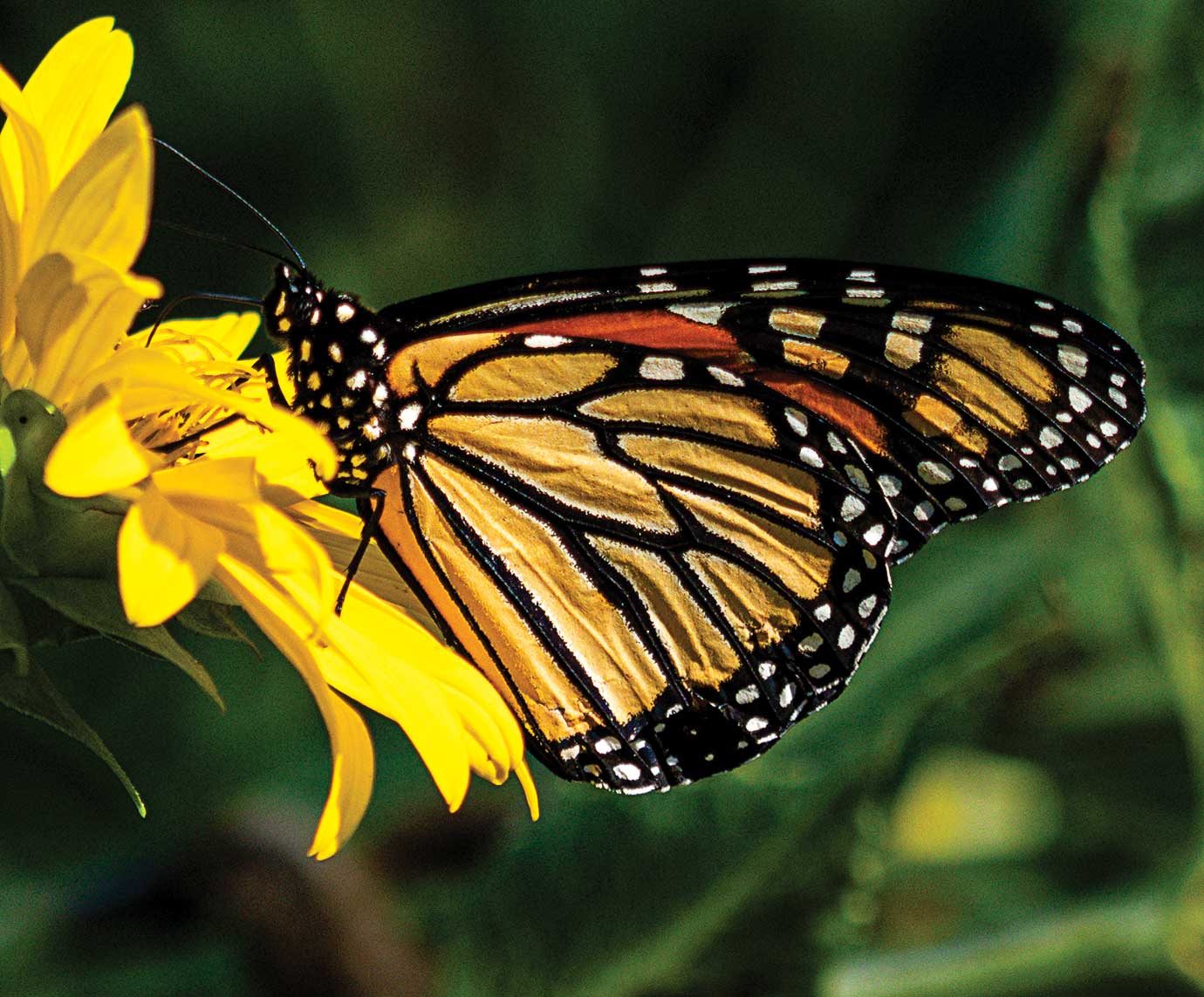
Manzanares, however, still encourages planting milkweeds, as they do benefit monarchs and other pollinators that feed on their nectar and pollen.
“It is an easy way to involve people in conservation,” she said. Milkweed seedlings planted in urban and other areas will attract monarchs and entice them to lay a few eggs. Growing seedlings, however, is labor intensive and the transplants often need watering and, when planted in the wild, struggle to survive.
In reality, the only practical ways to substantially increase milkweeds and help the monarch is to include milkweed in the seed mixes used when restoring prairies and to manage existing grasslands using methods that increase the plants. Methods landowners can use to accomplish the latter follow.
Intense Spring and Fall Grazing
Fifteen years ago, my wife, Grace, and I began testing methods to increase milkweeds and other wildflowers in a 40-acre tallgrass prairie on her family’s farm in southeastern South Dakota. Like many Midwestern prairies, more than a century of season-long livestock grazing and, more recently, annual mid-summer haying, had stressed the prairie’s native grasses and wildflowers and allowed non-native grasses, mainly smooth brome and Kentucky bluegrass, to invade. At that time, the prairie supported few milkweeds or other wildflowers and had little value for monarchs. But things were about to change.
First, haying was replaced with intense spring grazing in most years, with occasional additional fall grazing, or spring prescribed fire followed by rest the remainder of the growing season. These practices stressed the spring- and fall-growing brome and bluegrass while allowing the summer-growing native grasses and wildflowers to recover. Small colonies of common and whorled milkweed began to dot the grassland. These plants likely sprouted from the seed bank and then spread by rhizomes, underground stems with buds. We were also delighted to see scattered plants of the uncommon green and woolly milkweeds. Other pollinator-friendly wildflowers, such as purple coneflower and Missouri goldenrod, made their appearance as well.
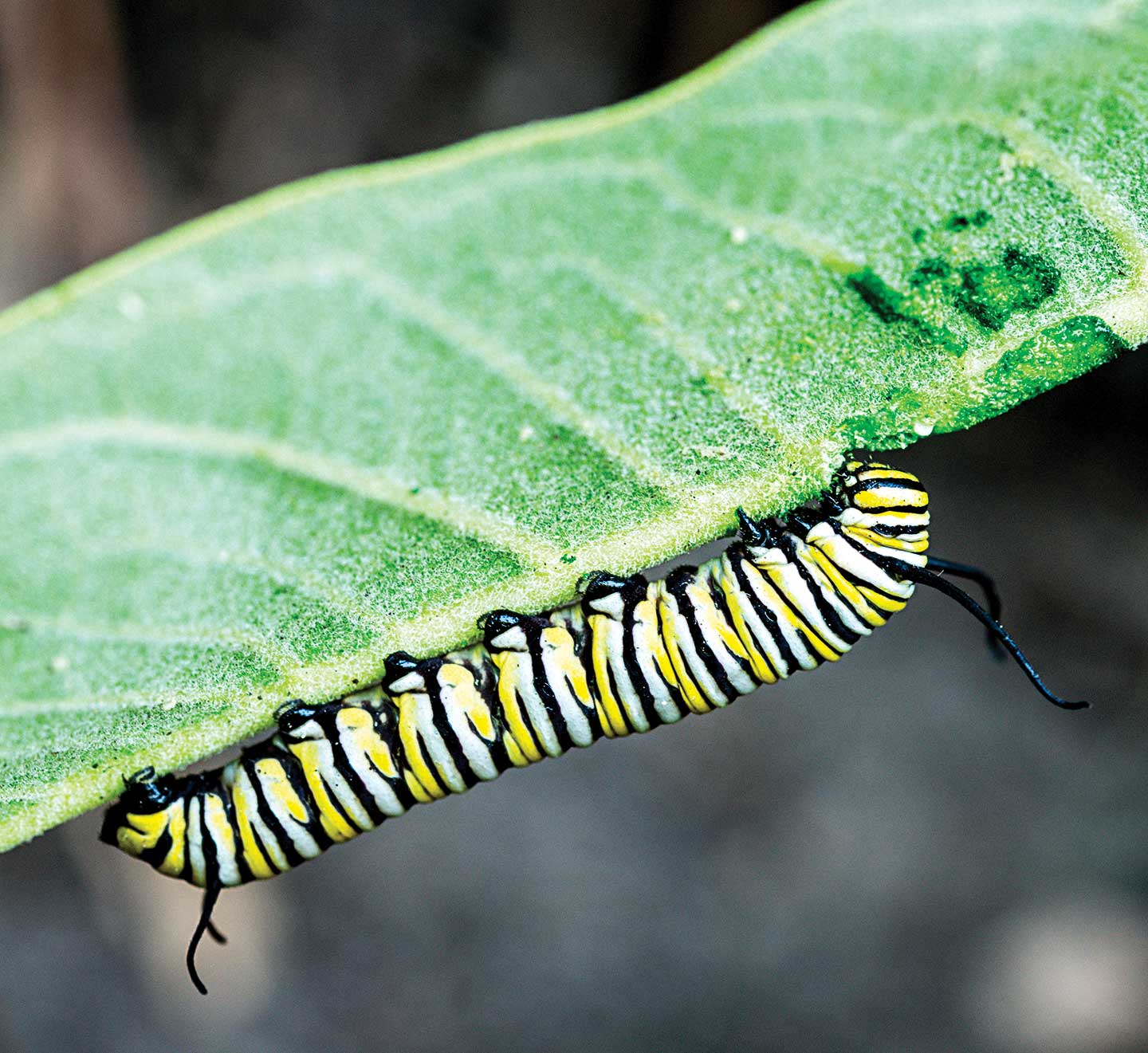
Our present renters, two young cattlemen, graze the pasture with 30 cow/calf pairs from about April 15 to June 1. This is a heavy stocking rate and the pasture is often golf-course short when the cattle are taken off, but hard grazing is needed to stress the stubborn brome and bluegrass. At first, the renters were hesitant to turn their cattle out in mid-April, fearing there wasn’t enough grass to sustain them. I maintained that the young, tender growth of brome and bluegrass is packed with nutrients and would put pounds on their animals. They consented, and when the animals came off the pasture that first year, one of them sheepishly admitted, “Our calves sure look good.” Many native plants, including milkweeds, ramp up their growth in early June and, if left in the pasture, the cattle will forgo the brome and bluegrass and eat the nutritious, early growth of these plants, setting them back as well.
We begin fall grazing about Sept. 15 and usually take the cattle off the pasture sometime in November. Cool fall temperatures trigger brome and bluegrass to resume growth after summer dormancy. At this time of year, the sugars they produce through photosynthesis are stored in their roots and used for the next spring’s growth. Hard fall grazing removes the leaves, stifling photosynthesis, food storage and the plants’ future vigor.
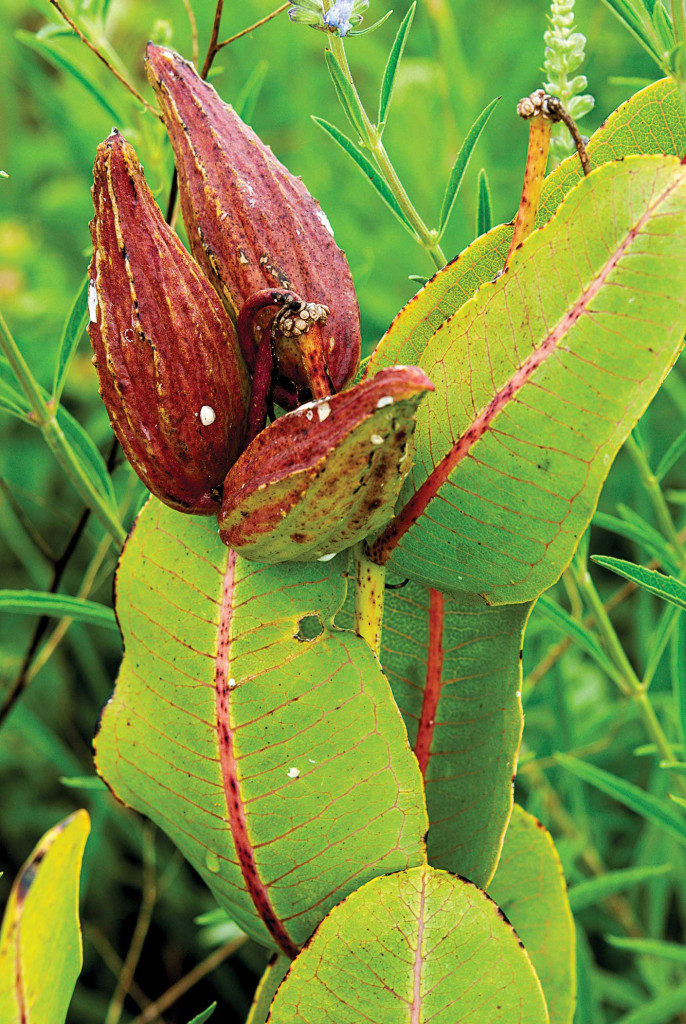
Ranchers with multiple pastures dominated by non-native grasses and nowhere else to graze their livestock can select their most wildflower-rich pasture for intense spring and fall grazing while grazing their less-diverse pastures during the summer. Occasionally, they can summer graze the diverse pastures, burn them or rest them the entire growing season. Doing so will benefit wildflowers, milkweeds and monarchs in at least one of the pastures.
Herbicide and Seeding
Although it sounds contradictory, Grace and I also use herbicides to promote milkweeds. In fall, we search the pasture for the dried, dormant stems of common and whorled milkweed and spray glyphosate herbicide (its many brand names include Roundup) on the still-green brome and bluegrass surrounding the stems. Glyphosate is a contact herbicide that kills only actively growing plants — it does not remain active in the soil.
The following summer, reduced competition from the non-native grasses allows milkweed plants to sprout new stems, often forming dense colonies.
We spray glyphosate only after at least two hard freezes, where nighttime temperatures drop to at least 28 degrees Fahrenheit. The cold further stimulates the non-native grasses to move nutrients from their leaves to their roots for winter storage, and the herbicide is carried along for the ride. Once in the roots, the herbicide is more effective, killing the entire plant. We spray only when daytime temperatures reach 50 degrees or higher for two consecutive days, spraying on the first day at a rate of two quarts per acre along with a non-ionic surfactant and ammonium sulfate. We have had our best luck killing brome and bluegrass by spraying in late November, but spraying into December can also be highly effective.
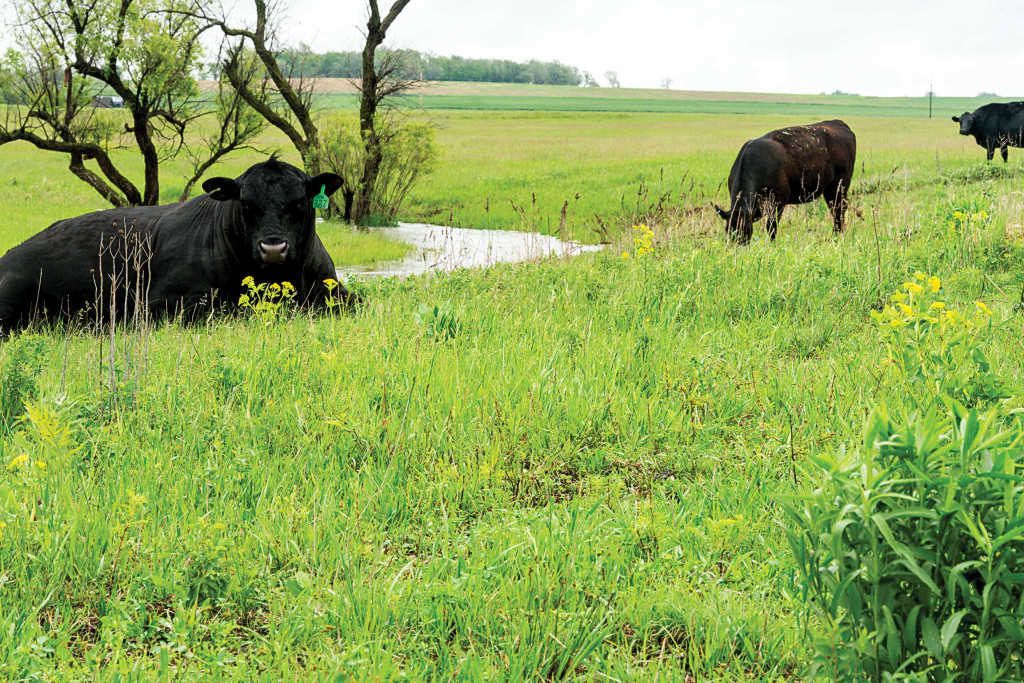
Using a boom sprayer mounted on an all-terrain vehicle, we also treat larger areas of brome and bluegrass, up to about a quarter acre, in the fall, and then hand-sow milkweed and other wildflower seed in late fall or early winter. We only seed in years when the prairie has been grazed or burned and has little thatch, as this ensures good seed-to-soil contact and germination.
Using this method, about 50 butterfly milkweed plants with glorious orange blooms now adorn our prairie, while a few colonies of Sullivant’s and swamp milkweed grow in moist soil near an intermittent stream. Others have had success establishing common, showy and whorled milkweeds from seed.
We collect the milkweed seed from local wild populations, but milkweed, as well as other wildflower seed, can be purchased from local and online seed dealers. Buy seed grown in Nebraska or nearby, as seed from plants grown in distant states may not be suited for our climate and soils. The demand for milkweed seed has driven up prices, so buy what you can afford. There are more than 4,000 butterfly milkweed seeds in an ounce, so a little goes a long way. Seedling survival can be increased by reducing grass competition for several years after planting using spring, fall or light summer grazing, or prescribed fire.
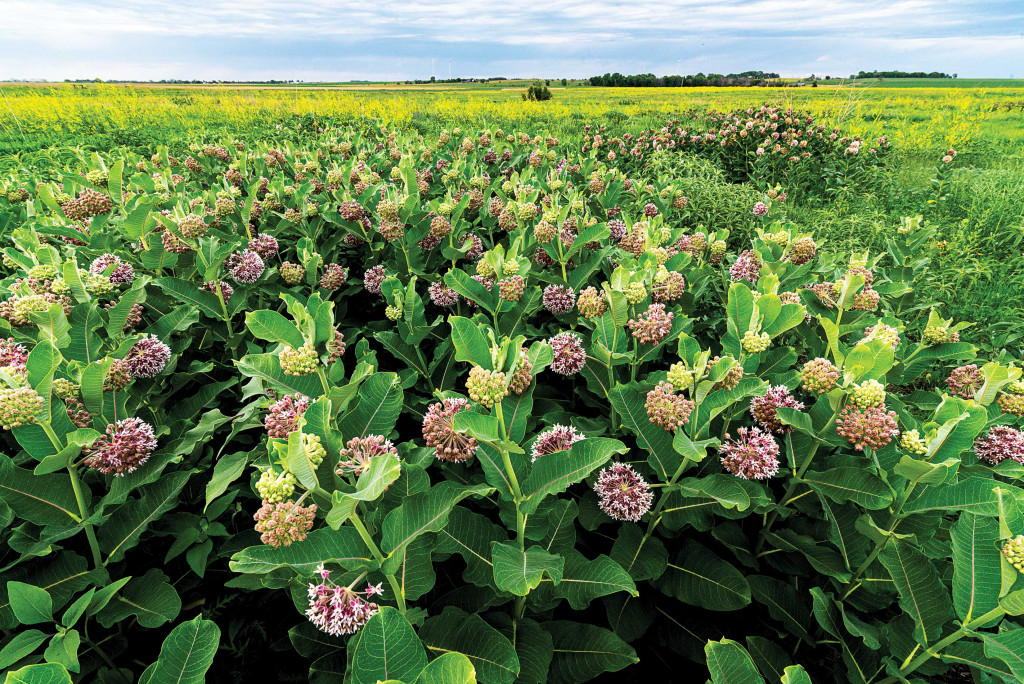
Disking and Tilling
Russ Hamer has been managing Nebraska Game and Parks wildlife management areas in northeastern Nebraska for 24 years. On these areas, he frequently uses light disking or tilling from spring through fall to create early-successional habitat on grasslands that have been previously farmed or otherwise heavily disturbed. These habitats, considered “weedy” by some, often teem with common milkweed along with annual plants including foxtails, ragweeds and sunflowers. These plants benefit a variety of wildlife, including gamebirds and songbirds, as well as all stages of the monarch lifecycle from eggs to migrating adults.
He disks and tills only to a depth of 1 to 2 inches. Nonetheless, this shallow disturbance exposes buried seeds, allowing their germination, and breaks the rhizomes of brome and bluegrass, weakening the plants.
“Of all our management practices, tilling and disking result in the best response of common milkweed,” said Hamer. “The response is best on clay and loam soils and less so on sandy soils.” After several years, however, if the grasses regain vigor and the milkweeds and annuals decline, the site may once again need to be disked.
On his WMAs, Hamer has also stopped planting traditional wildlife food plots where row crops such as corn and milo are planted and weeded with cultivation or herbicides. Instead, he broadcast plants food plots with sorghum, milo or mustards and does no weeding. Although competition from annual plants diminishes crop yields, they provide ideal brood-rearing cover for pheasant, quail and turkey chicks and support plentiful insects for the chicks to eat. The food plots’ early-successional plants include common milkweed as well as annual sunflowers. Fall-migrating monarchs flock to the sunflowers for nectar.
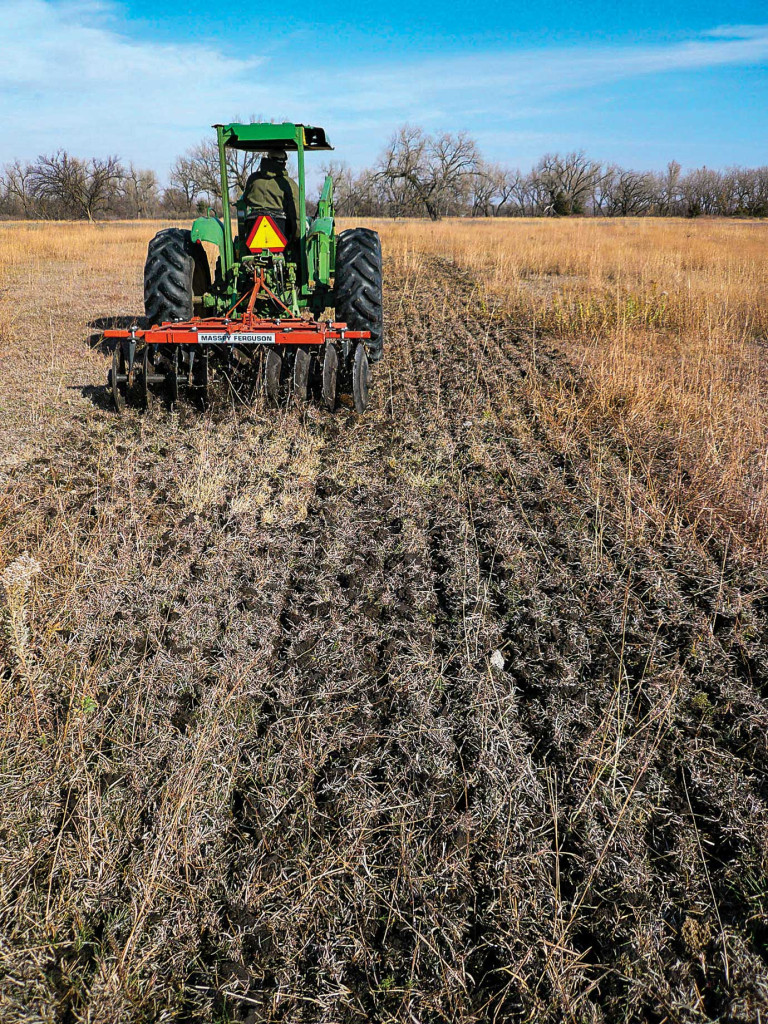
Hamer also uses other management practices to increase milkweeds, including prescribed fire, grazing and herbicide spraying, often in combination. “It’s OK to be aggressive,” he said. “The more aggressive you are, the more milkweeds you’ll get.”
In summary, Nebraskans can help the monarch by boosting milkweeds anywhere on the landscape. City dwellers can plant milkweed seeds or seedlings about their yard and garden, while farmers, ranchers and acreage owners can follow the steps provided above to increase milkweeds. Monarchs are superb long-distance fliers, and if you have milkweeds, they will come.
Monarch Habitat
The Monarch Joint Venture’s Pollinator Habitat Help Desk (337-422-4828) is a free resource available to landowners and others seeking guidance on how to establish milkweeds or otherwise enhance or create monarch habitat.
The post Managing Grasslands for Milkweeds and Monarchs appeared first on Nebraskaland Magazine.
















